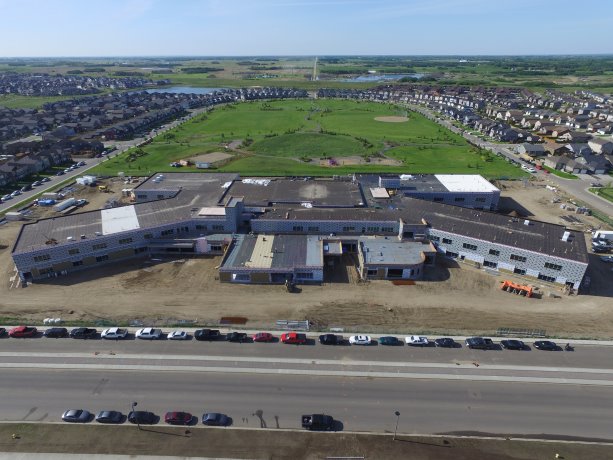A new report from the Canadian Council for Public-Private Partnerships (CCPPP) argues the proven benefits of the P3 procurement model are translatable to the bundling of projects, so there is a strong case for accelerating P3 project bundling across Canada.
Stakeholders from the public and private sector with experience in the P3 space offered input into a future path for bundling during a senior executive roundtable convened by the CCPPP and S&P Global in Toronto in February.
The successes of P3 school bundling in Saskatchewan and Alberta, Ontario Provincial Police facilities, On Route service stations in Ontario, and the North Commuter Bridge and Parkway project in Saskatoon, also procured through P3 bundling, were identified as case studies.
But there were also limitations to the strategy identified at the roundtable, said Steven Hobbs, CCPPP director of strategic planning and partnerships.
The schools bundled in Alberta was seen as possibly defining an upper limit in terms of manageable scale, and the sheer size of billion-dollar P3 projects like Toronto’s Eglinton Crosstown LRT build — though not a bundled project — which attracted only two bids from large consortia was said to be a reminder that bundling should not result in reduced competition.
"When you’re talking bundling, you’re talking assets that on their own probably wouldn’t be a P3 but by bundling them you are able to bring them into the model, you are able to get the sort of size and risk transfer that makes a P3 a lot of sense," said Hobbs.
The consensus from the working group was that the scale has to be large enough to attract private capital, with the rule of thumb being a minimum $100 million.
The P3 model has been used on 259 Canadian projects worth over $122 billion for completed projects, the report indicated, representing a savings to government of up to $27 billion.
Benefits from P3 bundling include savings on design and construction costs through economies of scale, efficiencies and speed in rolling out projects, the attraction of private capital to projects that otherwise would be fully funded by government, the development of asset management plans with life cycle maintenance built in for smaller jurisdictions and risk being spread across multiple projects, Hobbs pointed out.
He added if one project from among a dozen in a bundle ran into problems, the contractor could focus resources on keeping the 11 others on track while efforts were made to deal with the problem on the difficult job and then play catch-up.
"That life cycle piece is really key because when 30 years down the road this asset is in way better shape than a typical government asset would look like after 30 years, you really start to realize the long-term cost savings," Hobbs explained.
The stakeholders concluded groupings of projects must be close enough geographically so that equipment and human capital can be shared, and managers can deal practically with emerging challenges.
Organizationally, the report observed, P3 bundling requires one large government counterpart with experience in the P3 model, and that’s a problem regionally across Canada, with only Partnerships BC, SaskBuilds and Infrastructure Ontario well established in the field.
Otherwise it is a "mishmash," Hobbs said, with Manitoba and Newfoundland relying on private consultancy, Alberta’s agency not currently active and Quebec’s relatively quiet within a "pretty stagnant P3 market."
Another potential problem is obtaining buy-in from local jurisdictions, with local government perhaps unwilling to relinquish some control, said Hobbs.
"The Saskatchewan schools is a good example with fast builds and the Ministry of Education working through the local school boards. There was a lot of community engagement getting input into those schools," he said.
"The premier made it pretty clear with the school boards, ‘Listen, if you don’t want to do a P3 we’ll go through the normal budget process and you’ll get the school when we have funds available. But if you are willing to opt into this P3 process and we can do a school bundle, we’ll be able to put shovels in the ground right away,’ " said Hobbs.
In that project, 18 elementary schools were built in two years — one Catholic and one public on each of nine sites — with a P3 contract value of $635 million and an estimated savings of $100 million. GEC Architecture and Kindrachuk Agrey Architecture did the design, Bird-Wright undertook construction and Johnson Controls Canada is doing maintenance. An estimated 2,300 construction workers were employed.
Project types identified for possible P3 bundling included schools, bridges, roads, water and wastewater projects and federal assets such as border infrastructure and military accommodations. First Nation communities in the Atlantic provinces are currently examining P3 bundling of water infrastructure projects through the Atlantic Policy Congress.
Hobbs said although there were only committed P3 stakeholders on hand for the roundtable, there was ample airing of the drawbacks of the process.
Fears of large consortia squeezing out local contractors with the expansion of the model into smaller community projects are not supported by evidence, the report said, with small and local contractors generally sought after. This was the case with the school bundles in Saskatchewan, Hobbs said.
Infrastructure Ontario has a process for rewarding local content that could be replicated for P3 bundling, the workshop participants pointed out.












Recent Comments
comments for this post are closed